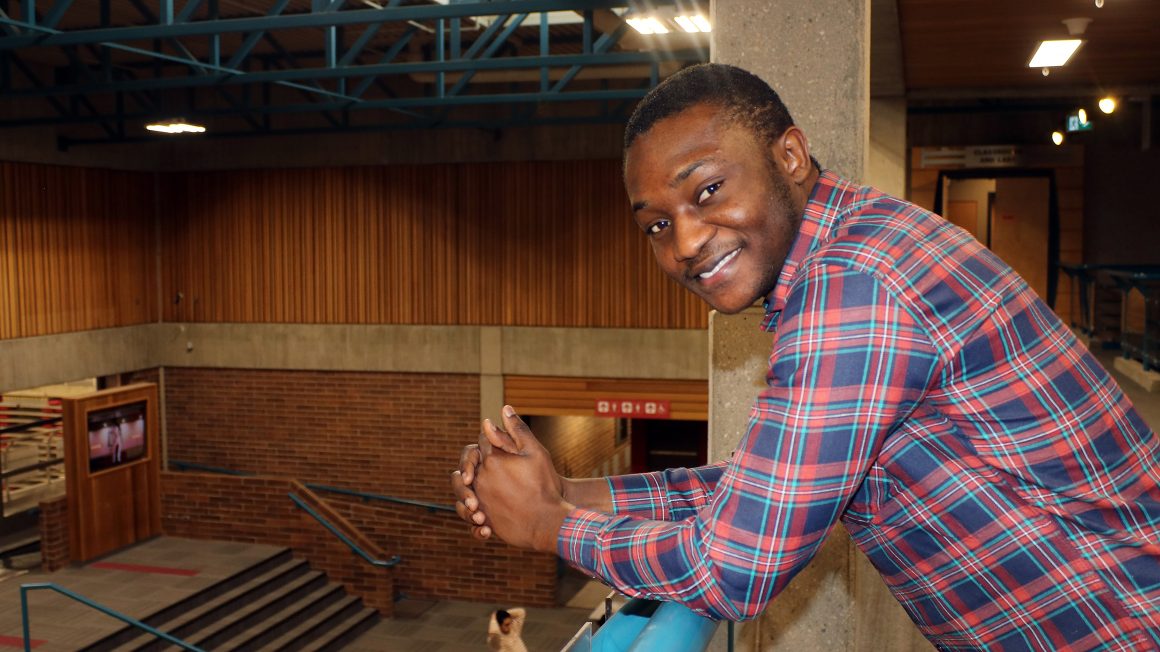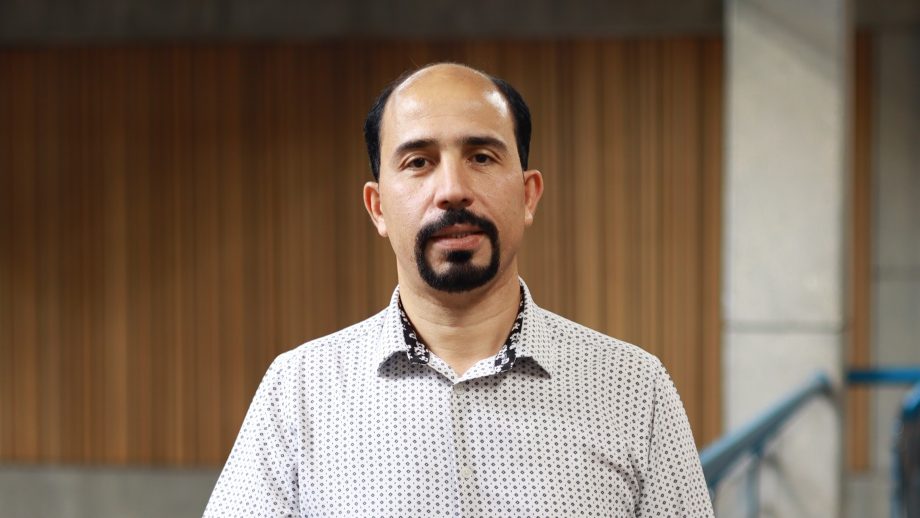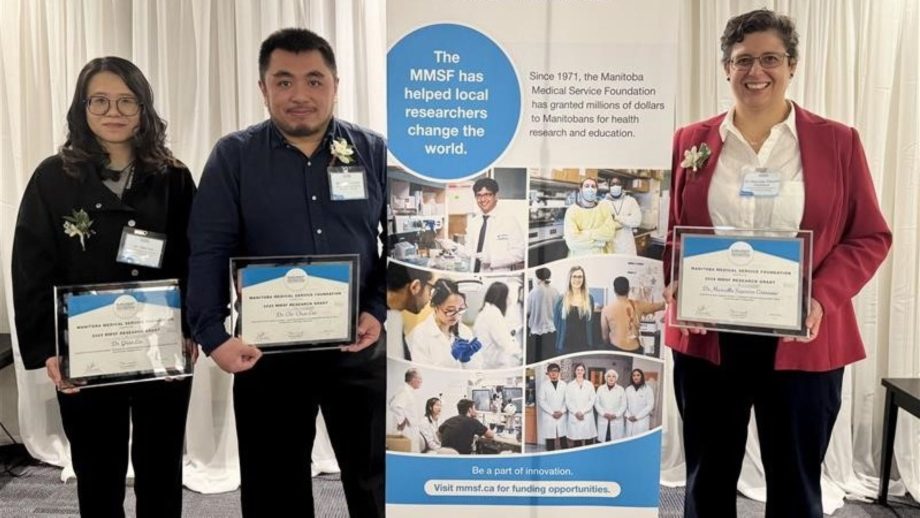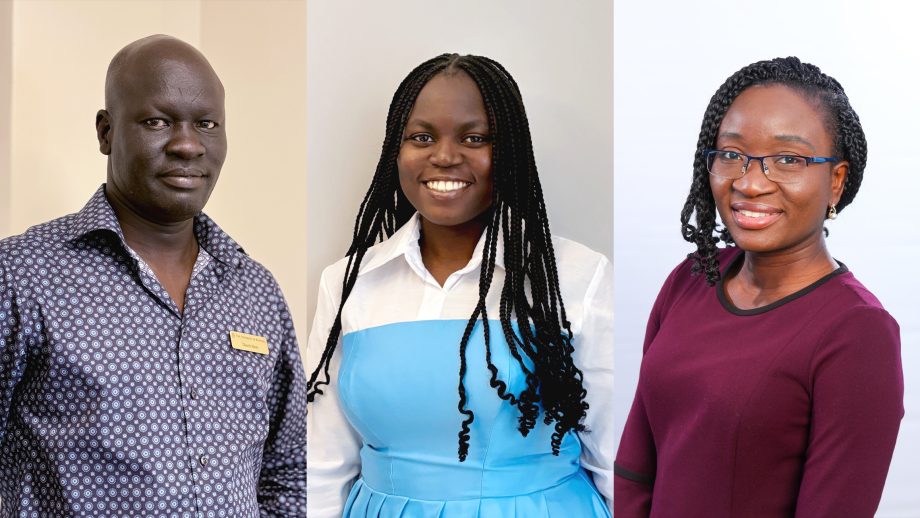Arnold Osei, an international graduate student at The University of Winnipeg, completed his master’s degree in applied computer science in October.
Along the way, Osei gathered accolades, published research papers, and received funding to conduct innovative research. He defended his thesis with distinction, received the 2021-22 President’s Scholarship for World Leaders, and was even nominated by his professors to be valedictorian.
But Osei said what he gained from his time at UWinnipeg will show up in his character as well as on his resume.
“The discipline, the fortitude. Those kinds of things you just cannot get with awards. It’s the whole journey, the experience. For me, that’s the most treasured part of this whole process.”
Journeying to excellence
Osei’s journey to Winnipeg began after he completed an undergraduate degree in telecommunications engineering at Kwame Nkrumah University in Kumasi, Ghana. He was looking for an opportunity to conduct research in cybersecurity and computer networking.
“I was looking at professors who were doing research in this field and who were wanting students who had passion,” Osei said. “That’s how I stumbled on Dr. Talal Halabi, who was then a professor here at UWinnipeg.”
Osei says he didn’t know anything about Winnipeg prior to being accepted to the University, but his “wild sense of adventure” and his trust in his supervisors—Dr. Halabi and Dr. Yaser Al Mtawa, Assistant Professor, Department of Applied Computer Science—gave him the confidence to make the trip.
Osei’s research at UWinnipeg focused on “strengthening the security of intrusion detection systems (IDS),” Dr. Al Mtawa said.
“He mainly worked on something very interesting we call MTD, or moving target defense. He used this technique in order to strengthen the IDS.”
Intrusion detection systems act like a gateway for your network.
It’s the whole journey, the experience. For me, that’s the most treasured part of this whole process.
Arnold Osei
In an office setting, you could compare your individual laptop to a home in a gated community. Each home in the community will have its own locks and security systems, but to reach those homes someone must pass through the main gate or find a way around it. An IDS works like the main gate, so the more secure it is, the more secure all the computers in the network will be.
“There has been a lot of research into securing intrusion detection systems,” Osei said, “but we were exploring MTD, which is a new concept.”
Before launching an attack, an attacker must do some reconnaissance to learn how a system works.
“If you want to rob a bank you probably would take some months to observe the place,” Osei said. “See who comes in at what time, and who goes out at what time, before you actually decide to rob the bank.”
MTD aims to make it harder for attackers to find patterns in security systems.
“The novel idea here was to take a very new concept, which is MTD, and apply it to the gateway,” Osei said. “So, if I’m an attacker and I want to figure out how your intrusion detection system works, it actually is very dynamic. It’s hard to figure out what’s going on.”
“The outcomes of his research ended up having very promising results that can be applied in many domains,” Dr. Al Mtawa said, “such as smart infrastructures like smart grids and intelligent transportation systems. Cybersecurity issues are on the rise and we want this kind of strengthening and hardening of our security measures, and this is what Arnold really did at the end.”
Although Osei’s research was all his own, he says he is grateful for support and independence he received from his supervisors. He plans to stay in Manitoba for now, and find a job that affords the same freedom to be creative and innovative that he enjoyed during his time at UWinnipeg.





